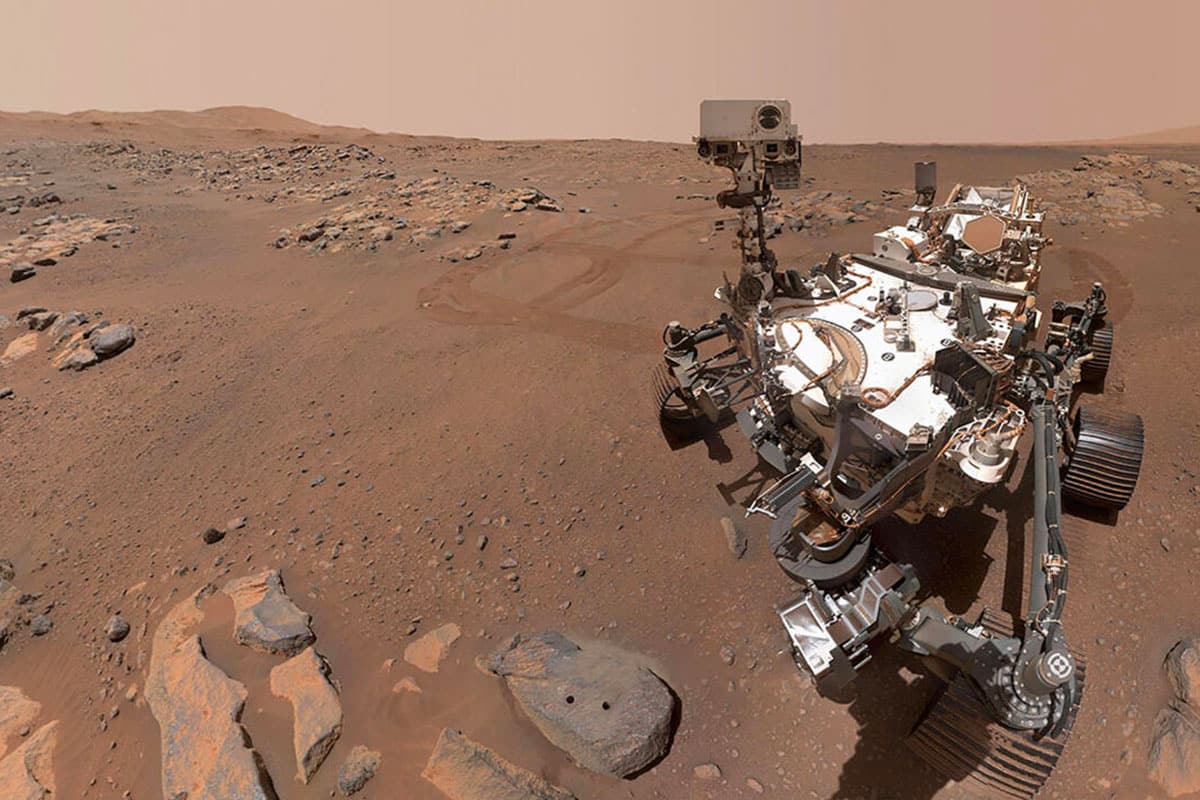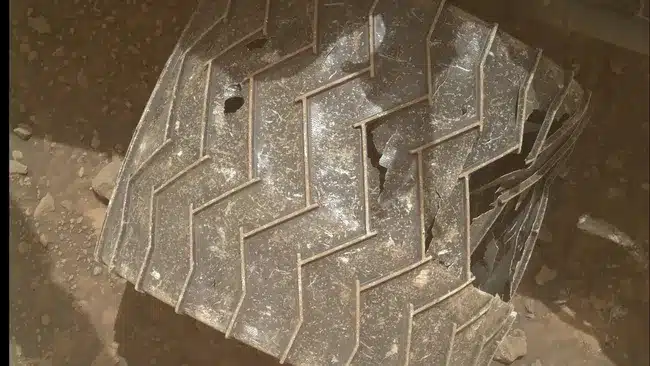The Curiosity rover, NASA’s intrepid explorer on Mars, has been diligently roaming the Red Planet’s surface for over a decade. Recent images released by the space agency reveal the toll of this extended mission on the vehicle’s hardware, particularly its wheels. Despite the visible wear and tear, Curiosity continues its crucial scientific endeavors, undeterred by the harsh Martian environment.
NASA reveals damage on Curiosity rover after 12 years on Mars

Since its landing in August 2012, Curiosity has been on a relentless quest to uncover evidence of past microbial life on Mars. The rover's primary mission focuses on analyzing the planet's geology and climate, paving the way for future human exploration. Over the course of its 12-year expedition, Curiosity has traversed approximately 32 kilometers (20 miles) across the challenging Martian terrain.
The rover's slow but steady pace, averaging about 4 centimeters per second (144 meters per hour), reflects its meticulous approach to scientific investigation rather than a need for speed. This methodical progress has allowed Curiosity to conduct thorough examinations of its surroundings, including :
- Rock and soil sample analysis
- Atmospheric composition measurements
- Radiation level monitoring
- Geologic feature documentation
Curiosity's journey began in the expansive Gale Crater, a 154-kilometer-wide impact basin chosen for its potential to harbor evidence of past habitability. At its current pace, the rover would require nearly six decades to traverse the entire crater diameter, highlighting the vast scale of its exploratory canvas.

Battle scars : The impact of Mars' unforgiving terrain
The latest images captured by Curiosity's Mars Hand Lens Imager (MAHLI) on September 22, 2024, reveal significant damage to the rover's wheels. This wear is a testament to the harsh Martian landscape, characterized by sharp rocks and abrasive sand that continuously challenge the vehicle's structural integrity.
Interestingly, signs of wheel deterioration were observed as early as 2013, merely a year into the mission. This rapid wear underscores the formidable nature of Mars' surface and the engineering challenges faced in designing equipment for long-term extraterrestrial exploration.
Curiosity's imposing physical presence contributes to the stress on its components :
| Dimension | Measurement |
|---|---|
| Length | 3 meters |
| Width | 2.8 meters |
| Height | 2.1 meters |
| Mass | 899 kg |
The rover's substantial mass, combined with the rugged terrain, places considerable strain on its wheels, leading to the observed damage. However, NASA engineers have implemented innovative solutions to mitigate further deterioration and ensure the continuation of Curiosity's vital mission.
Adapting to adversity : NASA's ingenuity in remote problem-solving
Despite the visible damage, Curiosity's mission perseveres. NASA's Jet Propulsion Laboratory (JPL) scientists have demonstrated remarkable adaptability in addressing the challenges posed by Mars' unforgiving environment. From a distance of 62 million kilometers, they have successfully implemented software updates to optimize the rover's performance and longevity.
One of the most significant improvements involves the development of new algorithms that allow for independent speed adjustments of each of Curiosity's six wheels. This innovation helps distribute the pressure more evenly across the wheels, reducing the impact of sharp rocks and extending their operational lifespan.
The resilience shown by both the rover and its Earth-based team exemplifies the spirit of space exploration. As NASA continues to push the boundaries of our understanding of the cosmos, similar problem-solving skills will be crucial for future missions. For instance, the NEO Surveyor spacecraft, set to revolutionize asteroid detection, will likely benefit from the lessons learned through Curiosity's ongoing Martian adventure.
Beyond the wheel damage : Curiosity's ongoing scientific pursuits
While the rover's physical condition has garnered attention, it's essential to recognize that Curiosity's scientific capabilities remain largely unaffected. The vehicle continues to utilize its suite of 17 cameras and various analytical instruments to gather crucial data about Mars' past and present conditions.
Curiosity's ongoing objectives include :
- Analyzing the chemical composition of Martian rocks and soil
- Studying the planet's geological history through sedimentary layers
- Monitoring atmospheric changes and weather patterns
- Searching for organic compounds that could indicate past or present life
The rover's persistence in the face of adversity mirrors the determination of the scientific community to unravel the mysteries of our neighboring planet. As Curiosity soldiers on, each new discovery brings us closer to understanding Mars' potential to have harbored life and its role in the broader context of our solar system's history.


